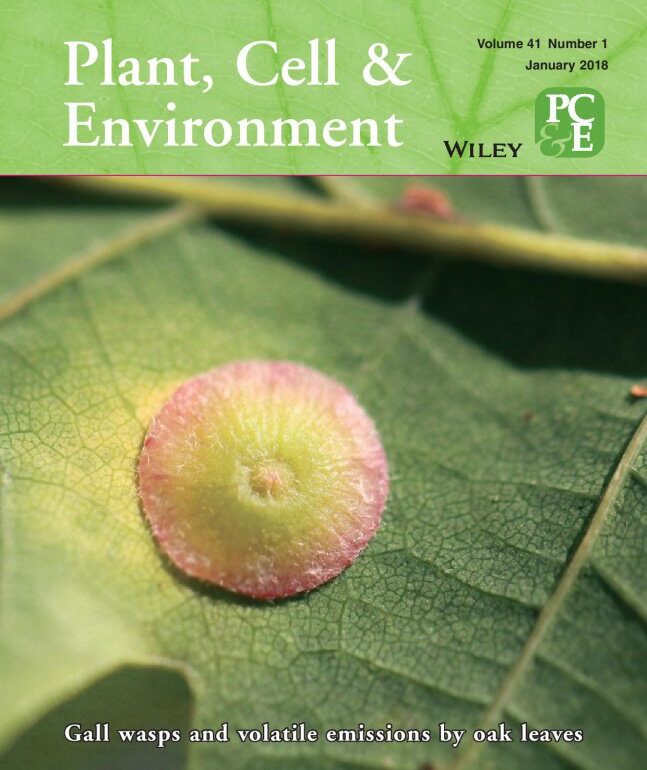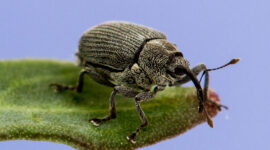As a dominant and popular tree species in Estonia and Northern Europe, the leaves of pedunculate oak (Quercus robur) trees are readily parasitized by an enormous diversity of gall wasp species.
Infection by gall wasps leads to the formation of peculiar outgrowths – galls – on the leaf surface. The wasp galls are highly variable in size and shape, and can comprise a large fraction of leaf mass, but despite the fascinating appearance and frequency of their occurrence, the physiological implications of different gall wasp infections had been poorly studied.
This study investigated the effects of infection by four widely spread species of gall wasps from the Neuroterus (N. anthracinusand N. albipes) and Cynips (C. divisa and C. quercusfolii) genera on foliage photosynthetic characteristics and on constitutive and induced volatile emissions in Q. robur growing in Tartu Tammik.
Gall wasp infections resulted in major reductions in oak leaf photosynthetic rate and constitutive isoprene emission, while a complex blend of induced volatiles was elicited. The emissions of all elicited compound classes, green leaf volatiles, mono- and sesquiterpenes and benzenoids, occurred in an infection severity dependent manner. Moreover, different gall infections resulted in unique emission blends, highlighting a surprisingly selective host volatile response to various gall wasps, and illustrating the complexity of host-gall interactions even in the same host species. The results in this paper collectively provide valuable information for diagnosing oak infections using ambient air volatile fingerprints and for predicting the impacts of infections on photosynthetic productivity and whole tree performance.
The study was conducted by an international research team led by Prof. Ülo Niinemets, Head of the Chair of Crop Science and Plant Biology in the Estonian University of Life Sciences. The study was published as the cover story in the January 2018 issue of a top journal in the field of plant research, “Plant, Cell and Environment”.
Original reference: Jiang Yifan; Veromann-Jürgenson Linda-Liisa; Ye Jiayan; Niinemets Ülo. (2018) Oak gall wasp infections of Quercus roburleaves lead to profound modifications in foliage photosynthetic and volatile emission characteristics. Plant Cell and Environment, 41:160–175, doi: 10.1111/pce.13050
Read the full article HERE.
Original post by the Estonian University of Life Sciences.
 Back
Back



